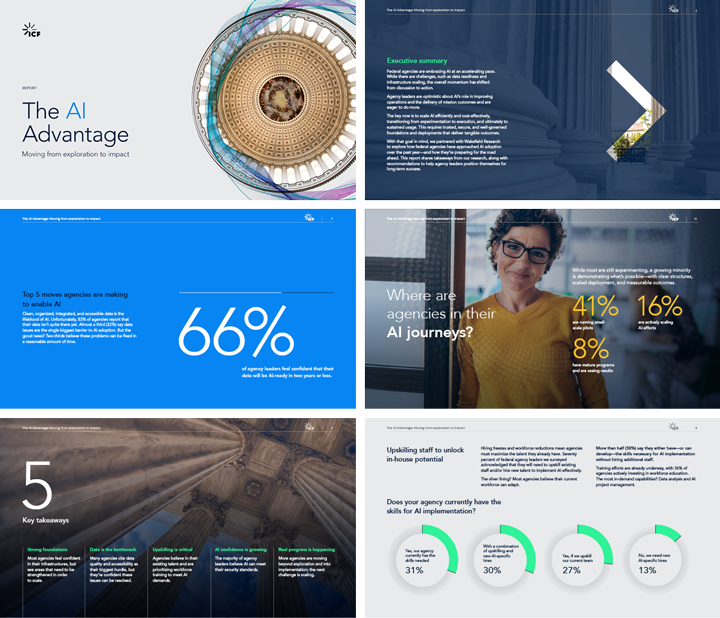
The government is going serverless—what it means and how it benefits mission outcomes
Contrary to its name, serverless computing doesn’t actually mean cutting servers out of IT completely. Going serverless means using cloud providers’ cloud-native tools and avoiding all operating system work. Serverless allows organizations to pass the cost, time, and effort of server maintenance and security to a third-party vendor (e.g., AWS and Microsoft Azure)—providing space for them to focus on mission delivery.
We’ve seen an increase in federal adoption of a serverless strategy as it begins to redefine the way the government builds, consumes, and integrates cloud-native applications. But what does going serverless mean for federal agencies and their missions? How can the wave of federal serverless adoption improve overall mission outcomes?
Increased development focus and productivity
A key benefit of federal serverless adoption is that it allows developers to focus their time and energy on building and running applications rather than server maintenance (i.e., scanning and constant security patching).
From a developer perspective, going serverless removes the logistical steps that stand between them and application development—and by extension organizations and their missions. Developers can refocus the energy they would have previously spent maintaining servers on building new features and launching applications.
That heightened focus on development, not operations, increases the speed at which applications are launched and begin providing value to citizens. After launch, that saved time also allows developers to quickly develop new features and continue improving customer experience at a rapid rate.
Scalable and saves money
With serverless computing, engineers can develop and deploy code using a serverless vendor while only being charged for their usage without worrying about bandwidth limits or maintenance. Paying to run servers all the time can be a massive expense, when going serverless you only pay for what you use and when you need more, you can easily scale at a rapid rate.
The key feature of serverless computing is that organizations go from paying for days and hours of computing to only paying for the milliseconds of computing that is used. Organizations can also take advantage of free service tiers from the cloud providers (e.g., the first 1M Lambda calls are free).
That shift follows the industry trend in thinking around computing costs. Computing charges started as monthly (i.e., bare metal in old school data centers) then shifted to hourly (i.e., VMs in the cloud) and now to milliseconds (i.e., serverless).
Application security and resilience
Many federal agencies have started to move away from on-premises agency-owned equipment, but security is still a common federal modernization concern. Federal workforces can be wary of cloud-based applications, preferring to keep servers in-house. While it may seem that an on-premises server is more secure, often the opposite is true.
Cloud providers manage the constant flood of security updates, meaning organizations can automatically keep up at a faster, better, and cheaper rate than any agency or contractor.
Also, for example, when going serverless and leveraging FedRAMP-authorized third-party platforms, if one experiences a cyber-attack, applications experience no downtime as they can easily be transferred across multiple secure locations. That proves to be valuable for security measures, but also means it’s very unlikely for applications to go down—improving user experience.
With an increase in cyber-attacks and hacking incidents across the government, the security and ability for applications to be hosted across servers in many locations is a valuable asset as site crashes and downtime is unlikely—keeping mission efforts moving forward and citizen experiences smooth even in the face of an attack.
How serverless benefits agencies at large
As we’ve mentioned above, going serverless is an opportunity for the government to modernize while improving scalability, saving money, and improving developer and user experience.
While saving money is always a key focus, improving workforce and user experience is also critical to agencies dealing with the growing talent gap and evolving citizen expectations. Agencies must consider the future of cloud-native applications and what the federal workforce and users expect from those applications—from development to launch to continued use.
